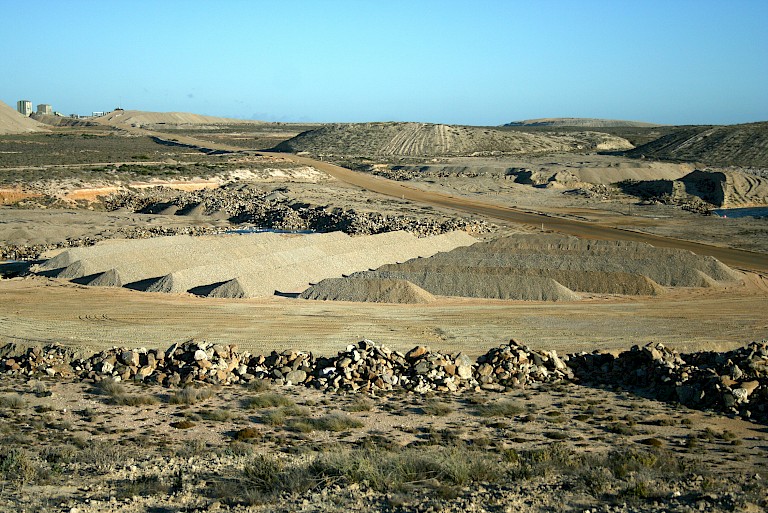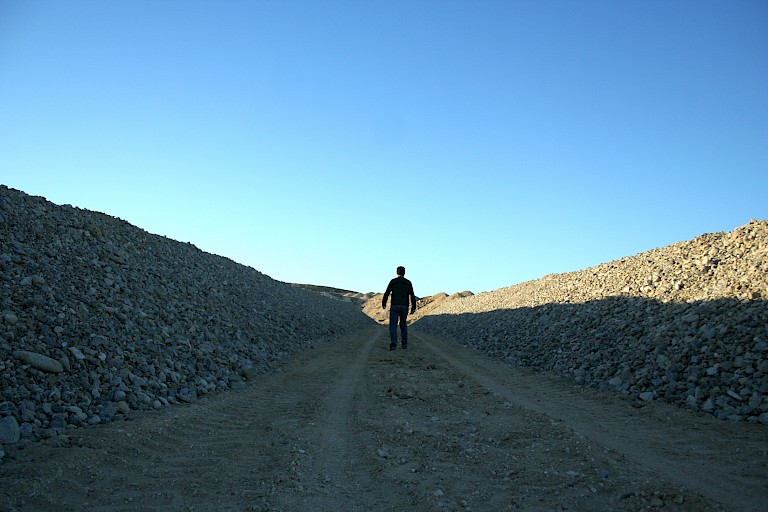



De Beers called in the assistance of LEAP (The Living Edge of Africa Project) and Conservation International South Africa, two organizations dedicated to post-mining regeneration, to form a plan of rehabilitation. The plan consists of three parts:
1) To replant the landscape where topsoil is available
2) To establish abalone and crayfish farming in large holes that were flooded with seawater
3) To use the abandoned mining equipment to create artworks with the damaged soil
Strijdom Van der Merwe was chosen for the first land art commission. He is known for his earthworks that manipulate the existing natural elements of a site into geometric forms. am/pm Shadow Lines takes after a children’s game played in the nearby city of Koingnaas where one tries to draw as many lines as possible with a handful of sand. This manipulation of a limited amount of material inspired the artist to build a 100 meter-diameter circle composed of 14 long, two-meter high triangular mounds using only the site’s leftover alluvial rocks and gravel. The work, large enough to be seen via Google Earth, was configured in relation to the sunrise and sunset in order to produce dramatic, geometric shadows that change throughout the day.
During the 22 days (182 working hours) it took to complete the project, new jobs were created for five operators awaiting reassignment.
am/pm Shadow Lines stands out as a unique solution to a considerable problem. Today mining companies preserve a site’s topsoil to enable the restoration of plant life at a later date, yet several mines were started long before laws enforced this practice. With only alluvial rock and gravel available, a different answer was needed for regeneration of the De Beers’ Namaqualand Mines. By using the discarded machinery too expensive to bring to another site and the 2,000 tons of alluvial rock and gravel leftover from digging, Van der Merwe was able to bring new life to this debris. The linear mounds have become a piece of art that changes softly with the shifting light. Art has given dead earth a second life.
Unfortunately, Namaqualand Mines remains closed. Security is necessary to deter further digging from outsiders, making am/pm Shadow Lines temporarily available solely via appointment and the Internet (Google Earth). However, plans have been in place to invite more land artists to create similar works. Together these will form a land art park that will draw tourists to the area already blessed with a beautiful coastline. As tourism grows, so will job and business opportunities for local residents.
All copyright belongs to Shanghai Academy of Fine Arts, Shanghai University.



